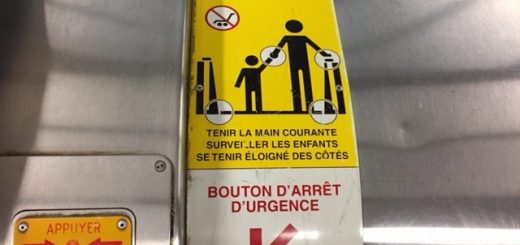Rankin’s Garage & Sales v JJ : Do You Owe a Duty of Care to Those Who Steal From Your Business?

This case is a follow-up to TheCourt.ca’s previous analysis of this case when it was first heard before the Supreme Court of Canada in January of 2018.
For many first-year law students, their introduction to tort law is rooted in the seminal British case Anns v Merton London Borough Council, [1978] AC 728 [Anns] and its Canadian counterpart Cooper v Hobart, 2001 SCC 79 [Cooper]. Collectively, the Anns-Cooper Test outlined by the Supreme Court of Canada (or “SCC”) lays out the factors to consider in determining whether a defendant owes a plaintiff a duty of care. At law, certain relationships are recognized to give rise to a prima facie duty of care. These include relationships between lawyers and their clients, doctors and their patients, manufacturers and their consumers, and a train station and its commuters. Where a prima facie duty of care does not exist, the Anns-Cooper Test evaluates whether a novel duty of care should be recognized on the facts.
But in what circumstances might a commercial property owner owe a duty of care to a thief who steals from their business? On the face of things, the notion that an innocent party could owe a duty of care to someone who steals from him seems nonsensical — yet matters are not so simple.
The SCC was forced to wrestle with this issue in Rankin (Rankin’s Garage & Sales) v JJ, 2018 SCC 19 [Rankin], when two minors stole a vehicle and suffered catastrophic injuries in a subsequent crash. Does this scenario engage a prima facie duty of care? If not, would the Anns-Cooper test create one? In an application of “Tort Law 101,” the SCC attempts to answer these questions, with liability consequences for all brick-and-mortar business owners hanging in the balance.
Facts
While the seminal British tort law case Donoghue v Stevenson took place in Paisley, Scotland, this particular case takes place in Paisley, Ontario. Three friends (“JJ,” “CC” and “TT”) between the ages of 15 and 16 were drinking vodka with juice while smoking marijuana. Late in the evening, the respondent JJ and his friend CC decided to go to Rankin’s Garage, a car dealership located on a main intersection of the town and owned by appellant James Rankin.
The garage property was not secured. The boys walked around the lot, checking for unlocked cars, and eventually uncovered an unlocked Toyota Camry with its keys in the ashtray. They decided to go for a ride. CC was the driver and JJ was the passenger. While driving on a highway to a neighbouring town, CC was involved in a serious accident that resulted in a catastrophic brain injury to JJ. Through his litigation guardian, JJ sued Rankin’s Garage for negligence, alleging that the business owed JJ a duty of care.
Judicial History
Superior Court
Before a jury trial, the Superior Court accepted JJ’s argument that Rankin’s Garage owed a prima facie duty of care to JJ and was therefore negligent. The basis for this argument was that people who were entrusted with possession of motor vehicles must assure themselves that the youth in the community are not able to take possession of such dangerous objects. Rankin’s Garage was assessed to have 37% of the liability.
Ontario Court of Appeal
In JJ v CC, 2016 ONCA 718, the Ontario Court of Appeal (“ONCA”) upheld the trial court’s decision that CC (and Rankin’s Garage by contribution) was negligent, but rejected its assertion that a prima facie duty of care existed. Instead, the ONCA found that a duty of care arose only after applying the two-step Anns-Cooper Test, which is articulated by the SCC in Cooper:
At the first stage of the Anns test, two questions arise: (1) was the harm that occurred the reasonably foreseeable consequence of the defendant’s act? and (2) are there reasons, notwithstanding the proximity between the parties established in the first part of this test, that tort liability should not be recognized here? The proximity analysis involved at the first stage of the Anns test focuses on factors arising from the relationship between the plaintiff and the defendant. These factors include questions of policy, in the broad sense of that word. If foreseeability and proximity are established at the first stage, a prima facie duty of care arises. (Cooper, para 30, emphasis added)
Through this lens, Justice Huscroft (writing for a unanimous bench) found that the harm suffered by JJ was a “reasonably foreseeable” consequence. On the issue of foreseeability, he found that it was “a matter of common sense” that minors might harm themselves while joyriding. On the issue of proximity, he found that proximity need not be established by whether or not the appellant knew JJ – it depended on whether the appellant should have had minors like JJ in mind when he considered security measures at Rankin’s Garage. In Justice Huscroft’s view, he should have.
Lastly, the court rejected policy arguments that tort liability should be negated due to the illegality of JJ’s acts. This analysis was covered extensively by contributor Alice Pan in her previous analysis of this case.
At the Supreme Court: Are Vehicles Like “Loaded Guns”?
Writing for a 7-2 majority (with Justices Brown and Gascon dissenting), Justice Karakatsanis overturned both the trial and appeal court decisions.
Acknowledging that “this case can be resolved based on a straightforward application of existing tort law principles,” the majority applied the Anns-Cooper test and came to the exact opposite conclusion arrived at by the ONCA: no duty of care was owed by Rankin’s Garage to JJ.
In oral arguments before the SCC, a critical exchange took place between counsel for Rankin’s Garage and Justices Moldaver and McLachlin (from minutes 20:36 to 22:06 of the webcast). In this exchange, the justices affirmed that what needs to be “reasonably foreseeable” is not just the risk of theft, but rather that there is a risk of theft coupled with the possibility of unsafe operation and personal injury.
This exchange takes a leading role in the majority’s written reasons, which emphasizes:
Thus, in this context, it is not enough to determine simply whether the theft of the vehicle was reasonably foreseeable.
……………
The proper question to be asked in this context is whether the type of harm suffered — personal injury— was reasonably foreseeable to someone in the position of the defendant when considering the security of the vehicles stored at the garage. (Rankin, para 26, emphasis added)
This passage also distinguishes the majority’s conclusion from the Ontario Court of Appeal’s. To Justice Huscroft, it was simply “common sense” that minors were no less likely to steal a car than any other individual. To the Supreme Court, however, this inferential line of reasoning was dismissed as too weak to carry the day (Rankin, para 45).
The SCC accepted that theft of a vehicle is reasonably foreseeable. However, it dismissed the reasonable expectation that such theft would be by minors, that such minors would not be licensed to drive, and that such minors would necessarily be under the influence of drugs. Accordingly, it must follow that the chain of events linking the theft of the vehicle to the personal injury suffered was not reasonably foreseeable. On this basis, what presents itself plainly as “common sense” to one court is dismissed as “speculative” by the other (Rankin, para 50). The majority proclaimed that no duty of care was owed.
In summarizing the analysis, Justice Karakatsanis frames the majority’s mindset most succinctly:
Vehicles are ubiquitous in our society. They are not like loaded guns that are inherently dangerous and therefore must be stored carefully in order to protect the public. Commercial garages, unlike an individual who leaves a car unlocked with the keys accessible, have care and control of many vehicles and necessarily have to turn their mind to the security of those vehicles, especially after hours, to prevent theft of the vehicles. Having many vehicles, however, does not necessarily create a risk of personal injury. While cars can be dangerous in the hands of someone who does not know how to drive, this risk would only realistically exist in certain circumstances. (Rankin, para 60, emphasis added)
Commentary: Common and Not-So-Common Sense
This case involves two clearly different events: (i) the theft of a vehicle and (ii) a substance-influenced accident that occurs some significant distance away, and some length of time thereafter. Is it a “reasonably foreseeable” inference that these two events would follow hand-in-hand? To me, the answer is no. There is even a reasonable argument to be made that your average thief would drive more carefully than usual after stealing a car, all the better to avoid suspicion. This may even be “common sense” to some.
Apart from vexing law students, this case also presents several practical implications for brick-and-mortar business owners. This case does not at all absolve brick-and-mortar businesses from liability. Instead, Rankin upholds the proposition that you owe a duty of care — even to those individuals stealing from your business — if both the theft and the risk of injury are reasonably foreseeable.
On a practical level, business owners should take careful stock of their inventory in evaluating whether or not they carry the liability of negligence. At a more elementary level, a business that stores items that could be dangerous to an uninformed person (or thief) should take above-average precautions to secure their inventory. A less clear question is “what is foreseeably dangerous”? Knives, guns, and fireworks warrant a clear answer. But what if your inventory is merely particularly heavy? Or sharp? Or flammable? Or explosive? Or poisonous? As Rankin demonstrates, common sense is not always so common.







Join the conversation